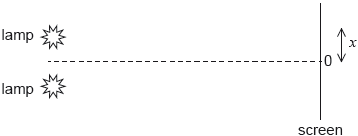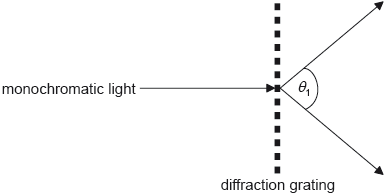| Date | November 2019 | Marks available | 1 | Reference code | 19N.2.HL.TZ0.10 |
| Level | Higher level | Paper | Paper 2 | Time zone | 0 - no time zone |
| Command term | State | Question number | 10 | Adapted from | N/A |
Question
The lens of an optical system is coated with a thin film of magnesium fluoride of thickness d. Monochromatic light of wavelength 656 nm in air is incident on the lens. The angle of incidence is θ. Two reflected rays, X and Y, are shown.
The following refractive indices are available.
Air = 1.00
Magnesium fluoride = 1.38
Lens = 1.58
The thickness of the magnesium fluoride film is d. For the case of normal incidence (θ = 0),
Light from a point source is incident on the pupil of the eye of an observer. The diameter of the pupil is 2.8 mm.
Predict whether reflected ray X undergoes a phase change.
state, in terms of d, the path difference between the reflected rays X and Y.
calculate the smallest value of d that will result in destructive interference between ray X and ray Y.
discuss a practical advantage of this arrangement.
Draw, on the axes, the variation with diffraction angle of the intensity of light incident on the retina of the observer.
Estimate, in rad, the smallest angular separation of two distinct point sources of light of wavelength 656 nm that can be resolved by the eye of this observer.
Markscheme
there is a phase change ✔
of OR as it is reflected off a medium of higher refractive index ✔
2d ✔
NOTE: Accept 2dn
✔
✔
NOTE: Award [2] for bald correct answer
reflection from «front surface of» lens eliminated/reduced
OR
energy reaching sensor increased ✔
at one wavelength ✔
NOTE: Accept reference to reduction of glare for MP1
standard single slit diffraction pattern with correct overall shape ✔
secondary maxima of right size ✔
NOTE: Secondary maximum not to exceed 1/5th of maximum intensity
Ignore width of maxima
use of ✔
«rad» ✔
NOTE: Award [2] for bald correct answer




